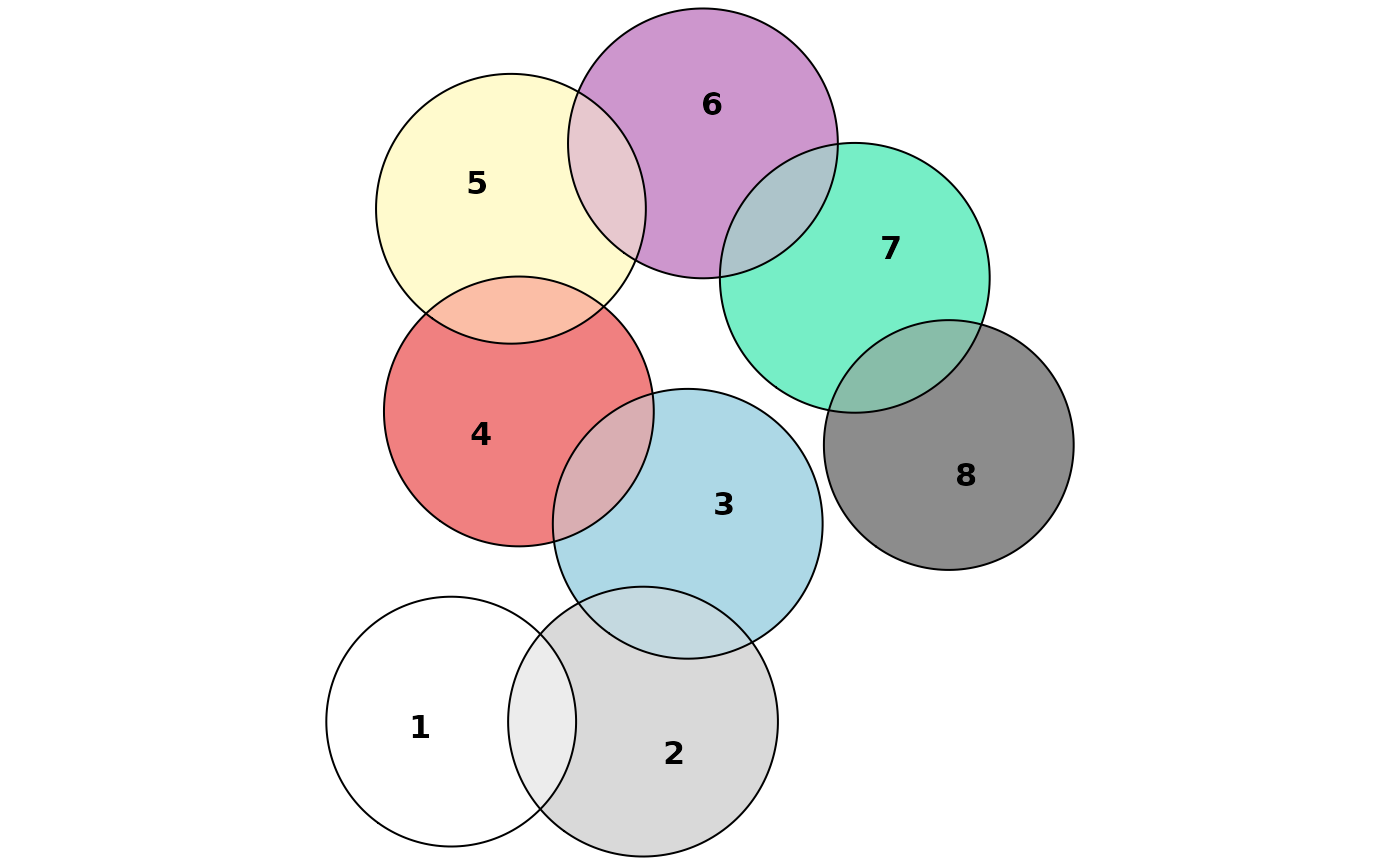Visualizing Euler diagrams with eulerr
Johan Larsson
2025-09-23
Source:vignettes/visualization.Rmd
visualization.RmdOnce we have ascertained that our Euler diagram fits well, we can turn to visualizing the solution. For this purpose, eulerr relies on the grid graphics system (R Core Team 2017) and offers intuitive and granular control over the output.
Plotting the ellipses is straightforward using the parametrization of a rotated ellipse,
where .
Most users will also prefer to label the ellipses and their intersections with text and this, however, is considerably more involved.
Labeling
Labeling the ellipses is complicated since the shapes of the intersections often are irregular, lacking well-defined centers; we know of no analytical solution to this problem. Instead, eulerr relies on the polylabelr package (Larsson 2018), which was created by the author. It provides a simple wrapper for the polylabel (Mapbox 2018) C++ library from Mapbox.
Aesthetics
Euler diagrams display both quantitative and qualitative data. The quantitative aspect is the quantities or sizes of the sets depicted in the diagram and is visualized by the relative sizes, and possibly the labels, of the areas of the shapes—this is the main focus of this paper. The qualitative aspects, meanwhile, consist of the mapping of each set to some quality or category, such as having a certain gene or not. In the diagram, these qualities can be separated through any of the following aesthetics:
- color,
- border type,
- text labeling,
- transparency,
- patterns,
or a combination of these. The main purpose of these aesthetics is to separate out the different ellipses so that the audience may interpret the diagram with ease and clarity.
Among these aesthetics, the best choice (from a viewer perspective) appears to be color (Blake 2016), which provides useful information without extraneous chart junk.
The issue with color, however, is that it cannot be perceived perfectly by all. Eight percent of men and 0.4% of women in European Caucasian countries, for instance, suffer the most common form, red–green color deficiency. Moreover, color is often printed at a premium in scientific publications and adds no utility to a diagram of two shapes.
For these reasons, eulerr defaults to distinguishing ellipses with color using a manually tuned color palette.
set.seed(2)
library(eulerr)
con <- c(A = 1, B = 1, C = 1, D = 1, E = 1, F = 1, G = 1, H = 1,
"A&B" = 0.2, "B&C" = 0.2, "C&D" = 0.2, "D&E" = 0.2, "E&F" = 0.2,
"F&G" = 0.2, "G&H" = 0.2)
plot(euler(con), labels = as.character(1:8))
The eight first colors of the default color palette
Normalizing dispersed layouts
If there are disjoint clusters of ellipses, the optimizer will often spread these out more than is necessary, wasting space in our diagram. To tackle this, we use a SKYLINE-BL rectangle packing algorithm (Jylänki 2010) designed specifically for eulerr. In it, we surround each ellipse cluster with a bounding box, pack these boxes into a bin of appropriate size and aspect ratio, and adjust the coordinates of the ellipses in the clusters to compact our diagram. As a bonus, this increases the chance of having similar layouts for different function calls.